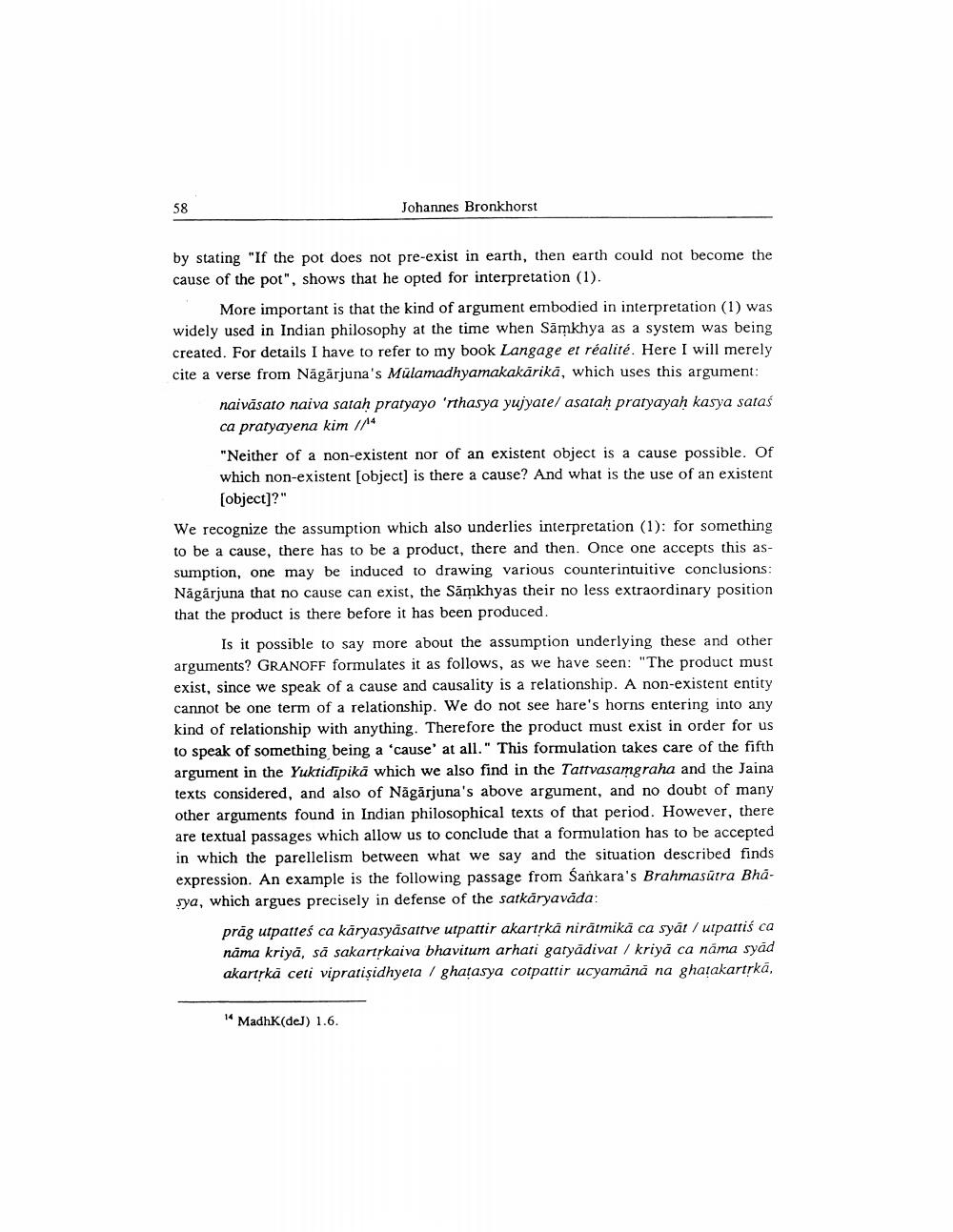Book Title: Last Reason For Satkaryavada Author(s): Johannes Bronkhorst Publisher: Johannes Bronkhorst View full book textPage 6
________________ 58 Johannes Bronkhorst by stating "If the pot does not pre-exist in earth, then earth could not become the cause of the pot", shows that he opted for interpretation (1). More important is that the kind of argument embodied in interpretation (1) was widely used in Indian philosophy at the time when Samkhya as a system was being created. For details I have to refer to my book Langage et réalité. Here I will merely cite a verse from Nagarjuna's Mulamadhyamakakärikā, which uses this argument: naivāsato naiva sataḥ pratyayo 'rthasya yujyate/ asataḥ pratyayaḥ kasya sataś ca pratyayena kim //4 "Neither of a non-existent nor of an existent object is a cause possible. Of which non-existent [object] is there a cause? And what is the use of an existent [object]?" We recognize the assumption which also underlies interpretation (1): for something to be a cause, there has to be a product, there and then. Once one accepts this assumption, one may be induced to drawing various counterintuitive conclusions: Nagarjuna that no cause can exist, the Samkhyas their no less extraordinary position that the product is there before it has been produced. Is it possible to say more about the assumption underlying these and other arguments? GRANOFF formulates it as follows, as we have seen: "The product must exist, since we speak of a cause and causality is a relationship. A non-existent entity cannot be one term of a relationship. We do not see hare's horns entering into any kind of relationship with anything. Therefore the product must exist in order for us to speak of something being a 'cause' at all." This formulation takes care of the fifth argument in the Yuktidipika which we also find in the Tattvasamgraha and the Jaina texts considered, and also of Nagarjuna's above argument, and no doubt of many other arguments found in Indian philosophical texts of that period. However, there are textual passages which allow us to conclude that a formulation has to be accepted in which the parellelism between what we say and the situation described finds expression. An example is the following passage from Sankara's Brahmasutra Bhāsya, which argues precisely in defense of the satkaryavāda: präg utpatteś ca karyasyasattve utpattir akartṛkä nirätmikā ca syat / utpattis ca nāma kriyā, sā sakartṛkaiva bhavitum arhati gatyādivat / kriya ca näma syād akartṛkā ceti vipratiṣidhyeta / ghatasya cotpattir ucyamănă na ghaṭakartṛkā, 14 MadhK(deJ) 1.6..Page Navigation
1 ... 4 5 6 7 8 9 10
